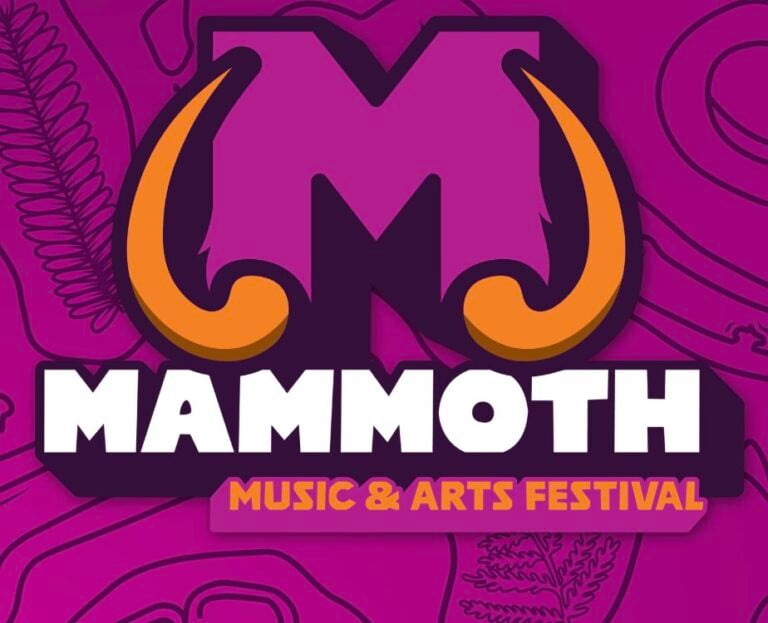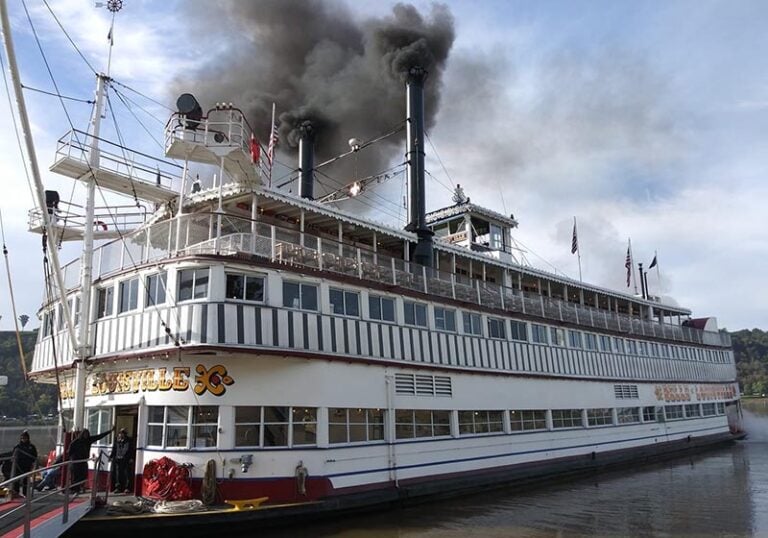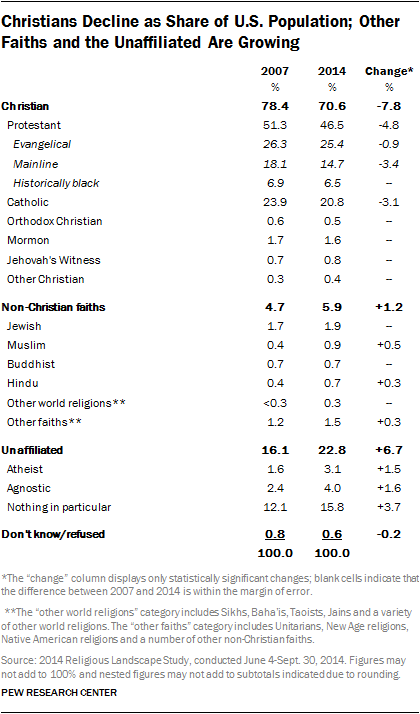The Christian share of the U.S. population is declining, while the number of U.S. adults who do not identify with any organized religion is growing, according to an extensive new survey by the Pew Research Center.
Moreover, these changes are taking place across the religious landscape, affecting all regions of the country and many demographic groups. While the drop in Christian affiliation is particularly pronounced among young adults, it is occurring among Americans of all ages. The same trends are seen among whites, blacks and Latinos; among both college graduates and adults with only a high school education; and among women as well as men.
To be sure, the United States remains home to more Christians than any other country in the world, and a large majority of Americans – roughly seven in 10 – continue to identify with some branch of the Christian faith. But the new survey of more than 35,000 Americans by the Pew Research Center finds that the percentage of adults (ages 18 and older) who describe themselves as Christians has dropped by nearly eight percentage points in just seven years, from 78.4 percent in a Pew Research survey in 2007 to 70.6 percent in 2014.
Over the same period, the percentage of Americans who are religiously unaffiliated – describing themselves as atheist, agnostic or “nothing in particular” – has jumped more than six points, from 16.1 percent to 22.8 percent. And the share of Americans who identify with non-Christian faiths also has inched up, rising 1.2 percentage points, from 4.7 percent in 2007 to 5.9 percent in 2014. Growth has been especially great among Muslims and Hindus, albeit from a very low base.
The drop in the Christian share of the population has been driven mainly by declines among mainline Protestants and Catholics. Each of those large religious traditions has shrunk by approximately three percentage points since 2007. The evangelical Protestant share of the U.S. population also has dipped, but at a slower rate, falling by about one percentage point since 2007.2
Even as their numbers decline, American Christians – like the U.S. population as a whole – are becoming more racially and ethnically diverse. Non-Hispanic whites now account for smaller shares of evangelical Protestants, mainline Protestants and Catholics than they did seven years earlier, while Hispanics have grown as a share of all three religious groups. Racial and ethnic minorities now make up 41 percent of Catholics (up from 35 percent in 2007), 24 percent of evangelical Protestants (up from 19 percent) and 14 percent of mainline Protestants (up from 9 percent).
To find out more about the U.S. Religious Landscape Study, click here.
From PewForum.org



















